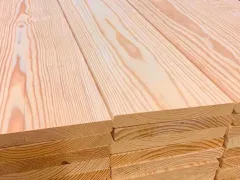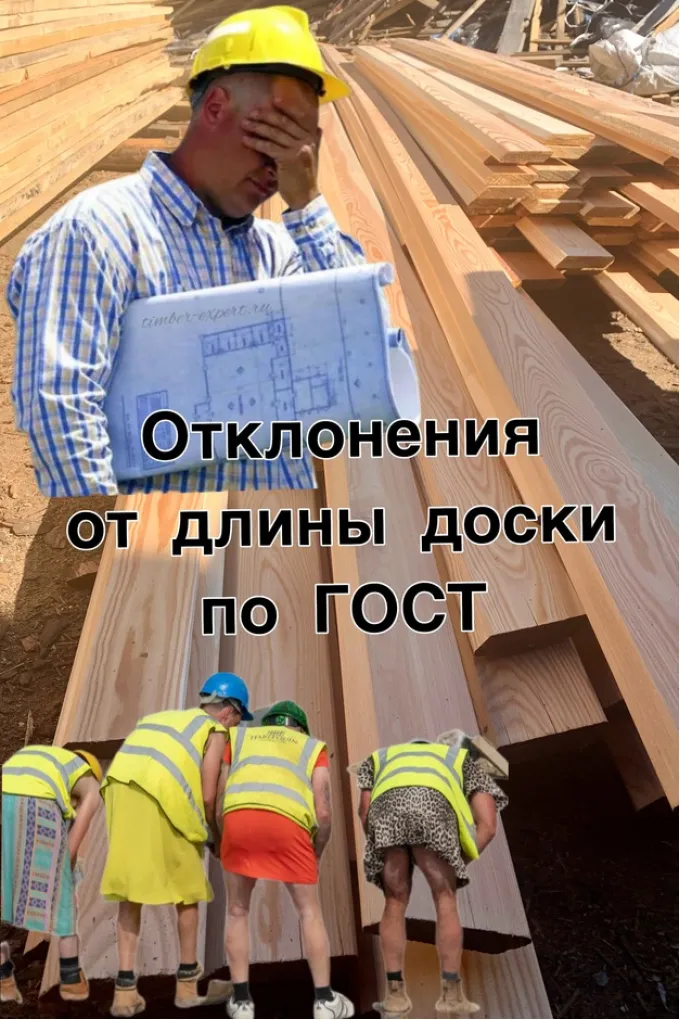
The untold truth about wood warping: what every professional and DIY enthusiast should know
The intricacies of wood products: from floorboards to decking and beyond.
Understanding woodwork and its nuances.
Picture this: you've just taken delivery of a fresh set of floorboards, and with excitement mounting, you're all set to commence your renovation. However, as the installation progresses, certain anomalies catch your attention—gaps seem more apparent, and joints aren't aligning perfectly. Observing this, your contractors' initial optimism starts wavering. One can't help but exclaim, "This floor is awry! Surely, it's the manufacturer's fault!"
Now, imagine another scenario: the setup of wainscoting. At first glance, the material seems impeccable. But as the work advances, familiar problems rear their heads: gaps between panels, joints that don't match up. Questions surrounding the material's quality start floating again. However, before directing criticism towards the manufacturer, it's imperative to acknowledge certain details, like the "allowable dimensional deviations." Could these subtle factors be the root cause? Or could the installation technique, tool selection, or even the installer's skill level be influencing the outcome? Let's plunge deeper to unravel these details and discern whether such concerns hold merit.
Embracing the versatility of wood in construction and design.
Planed wood products, including decking, flooring, and cladding, are witnessing an uptick in demand, thanks to their visual allure and utility. They stand out, offering several benefits over traditional lumber varieties.
For those in construction, budding architects, seasonal homeowners, or novices on the brink of embarking on a home-building or woodworking journey, selecting planed, profiled products isn't a mere mundane task. These materials demand a keen understanding of their idiosyncrasies during both selection and setup phases. Such responsibilities necessitate acute focus to prevent them from becoming overwhelmingly challenging.
A recurring query that emerges when dealing with elongated timber products is, "Why does this board seem misshapen or uneven?". Occasionally, this perceived misalignment might merely be a consequence of the viewing angle or perspective. It's crucial to recognize that our perception might not always mirror reality. A product might look imperfect, but that doesn't inherently suggest a flaw in its craftsmanship or quality.
Stay tuned as we continue our exploration into the fascinating world of wood, its products, and the mysteries they hold.
Deviations in lumber: key insights to consider.
Natural nuances of Top-Grade timber.
Regardless of its superior quality, timber products, ranging from larch planken to imitation timber and robust decking, aren't exempt from nature's inherent traits. Such unique characteristics often stem from the wood's organic processes, manifesting in diverse forms.
Understanding acceptable variances: the essence of GOST 8486-86 "Softwood Sawn Timber".
GOST 8486-86, a guiding standard for "Softwood Sawn Timber", outlines precise criteria, allowing for the effective classification of boards. Notably, it sets the allowable deviations from the envisioned ideal measurements. Addressing the issue of warping, the accepted deviation is within 0.2-0.4% of the total length. Thus, for a board stretching 6 metres, the acceptable variance from the perfect flatness ranges from 1.2 cm to 2.4 cm. Now, when you align two such boards, the combined deviations can be significant—potentially nearing 5 cm when juxtaposed! Add more boards to the mix, and it accentuates further. Such findings might prompt the declaration: "These boards are awry!" Yet, it's paramount to comprehend that these deviations are within acceptable bounds. In real-world scenarios, some boards from a batch might not exhibit these deviations, or they might be so subtle that they escape notice. Hence, a snap judgment based merely on visual observations might not always be accurate.
Analyzing larch floor boards: a dual perspective.
When presented with a larch floorboard, it's instructive to examine it from two distinct viewpoints. It's pivotal to note that these boards are typically smoothened prior to receiving any paint application. Linking the boards end-to-end on one side, a minor deviation might become discernible after a couple of meters. Switch your vantage point, and a minuscule discrepancy becomes evident at the opposing end.
The photo shows the larch floor board - after sanding before painting
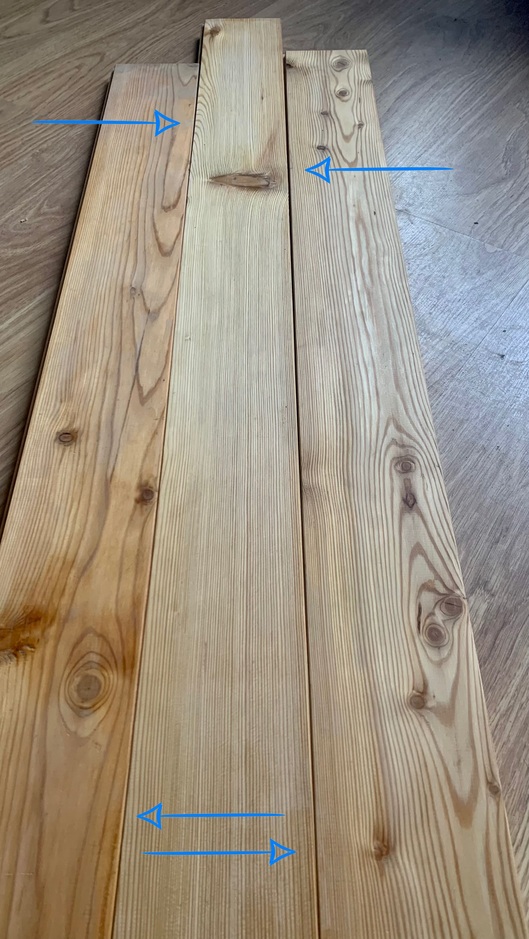
While millimetres might seem negligible, in the context of a board that's multiple metres long, these minor differences can accumulate to a few centimetres. However, such variances are well within established norms. The board isn't fundamentally "off." Expert installation, coupled with a meticulous floor screed, can seamlessly counter these differences. The significance of a top-tier screed cannot be overemphasized.
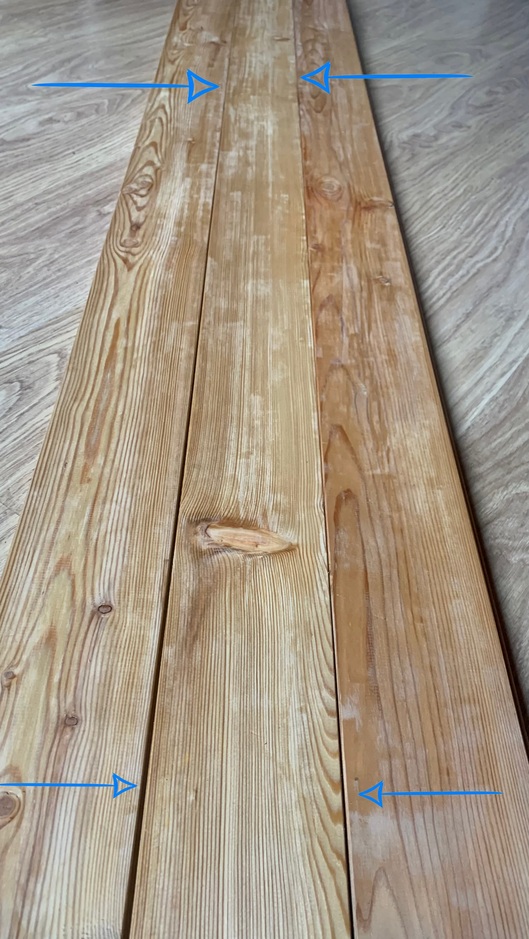
Crucial clarification on board length and grading.
It's vital to distinguish that deviations related to board length don't correspond to its grade. Be it a premium-grade product, devoid of any knots or imperfections, or an AB grade variant preferred for its cost-effectiveness, the length's deviation remains consistent. Therefore, equating wood grade with its length, whether it's decking, planking, or flooring, can be misleading. Unless we're dealing with subpar, non-standard products, the board's grade doesn't influence this factor.
However, it's essential not to conflate acceptable length deviations with inferior products showcasing pronounced deformities like a pear or guitar shape, or a wavy form. If discrepancies in width or thickness are evident along the board's span, it's a distinct category of issues—undeniably a blatant defect. Deviations in length, while noteworthy, don't impact the wood's innate characteristics, in contrast to morphological defects.
Observations from different perspectives: Siberian larch cladding rainscreen profile.
Let's delve into the intricate details of the Siberian larch cladding rainscreen profile, sized 20x170 mm and spanning 6 metres. A cursory look, especially from the pen photo, suggests we're observing a perfectly flat product.
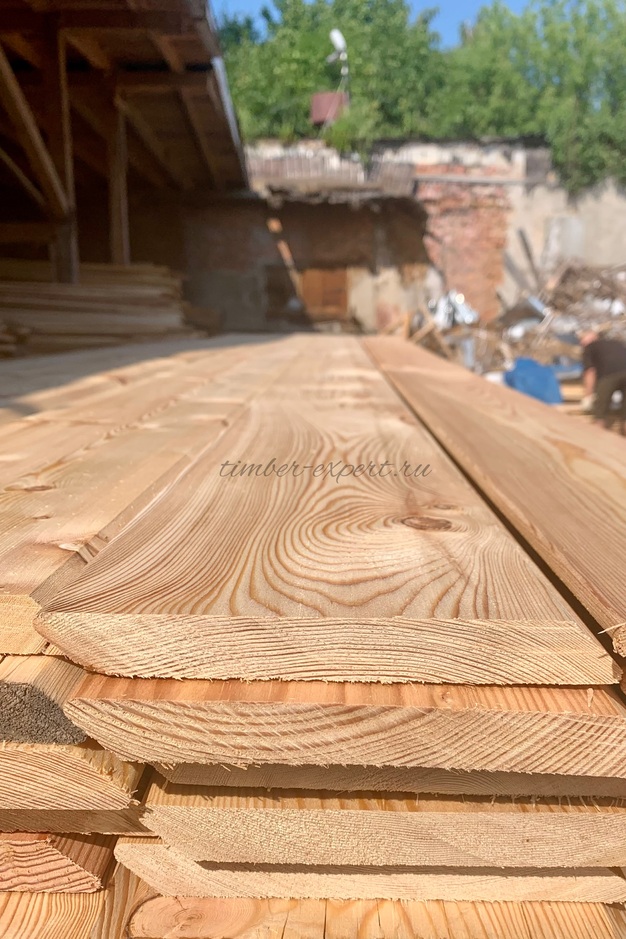
Yet, upon a more rigorous inspection from varying angles, many might deduce the profile appears warped or off in some manner.
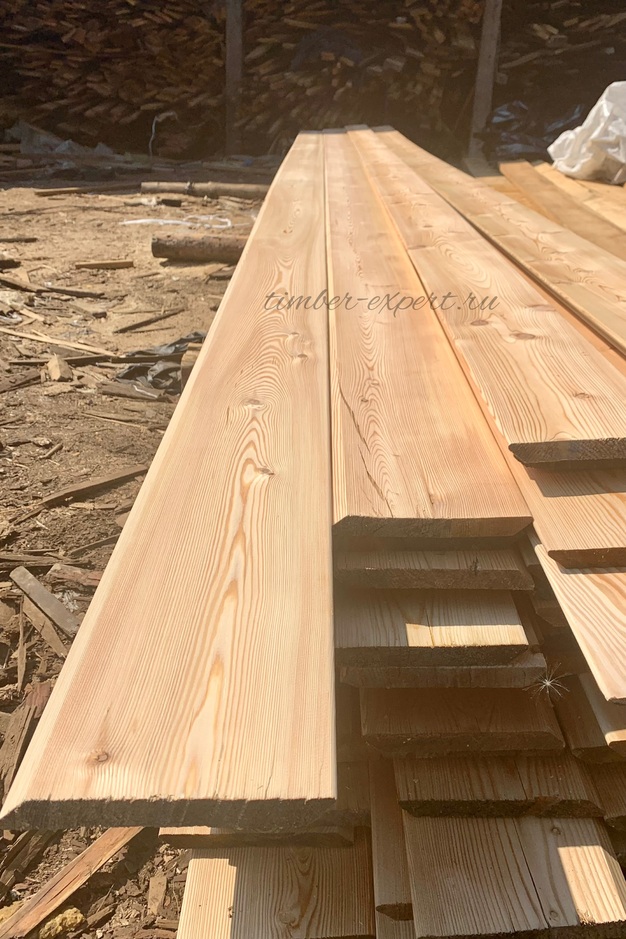
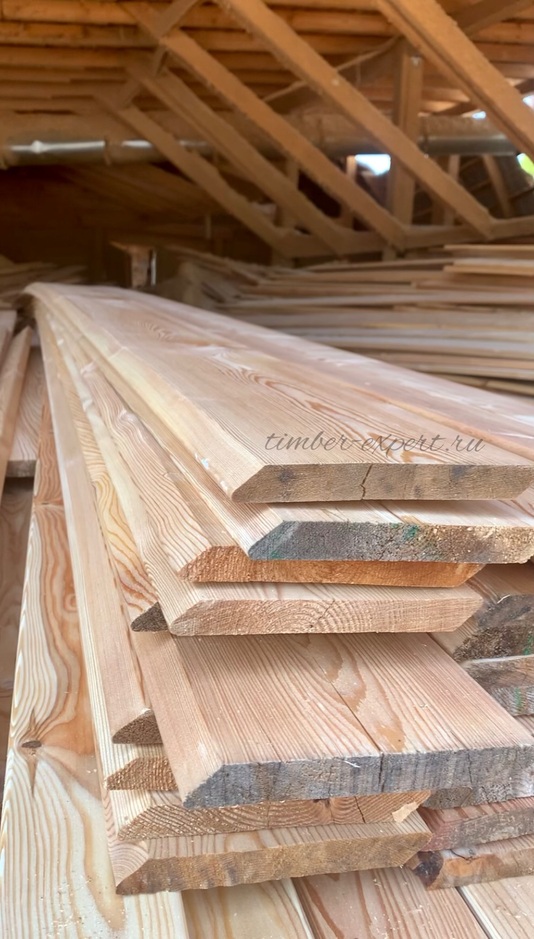
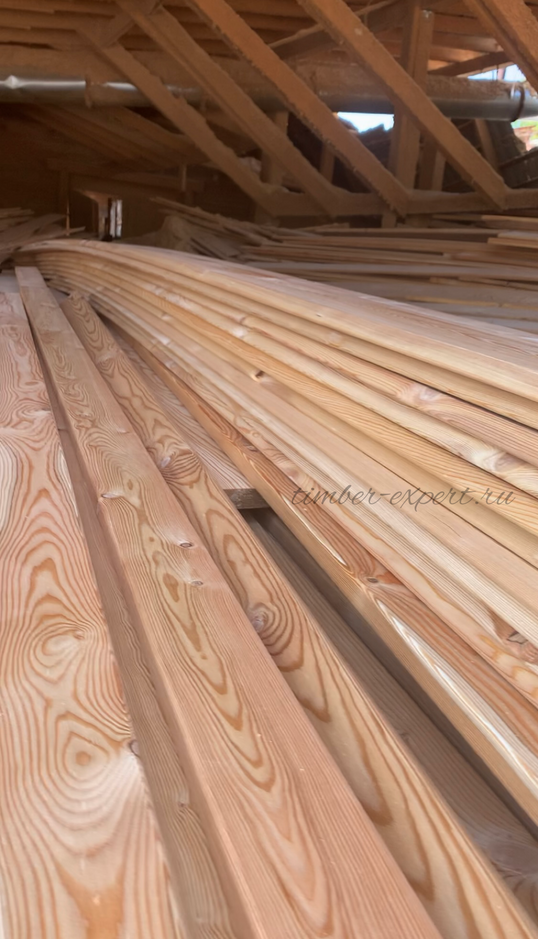
In this context, we're sidestepping discussions surrounding the wood's grade. Our primary intent is to underscore the permissible geometric deviations that can emerge due to the wood's intrinsic nature and the nuances of its fabrication. When the Siberian larch cladding rainscreen profile is methodically packaged and stacked, its flatness is impeccable. Contrastingly, when unpacked and spread out, its form might seemingly deviate. Such alterations in form aren't indicative of defects; they're innate and acceptable shifts that might arise from the wood's inherent traits and processing techniques. Before rushing to judgments about product quality, it's imperative to factor in this dimension. Grasping the intricacies of the fabrication procedures and wood attributes is essential for gauging the genuine quality of the Siberian larch cladding rainscreen profile.
Siberian larch claddind rainscreen 20x90 mm
Pondering another illustration - a 20x90 mm Siberian larch rainscreen, 6 metres long, available in extra and prima grades. Observing the photos taken from diverse angles reveals subtle bends and deviations. This is entirely standard, especially considering its length. One must understand that the visual distortions can be more conspicuous the narrower and longer the wooden product is.
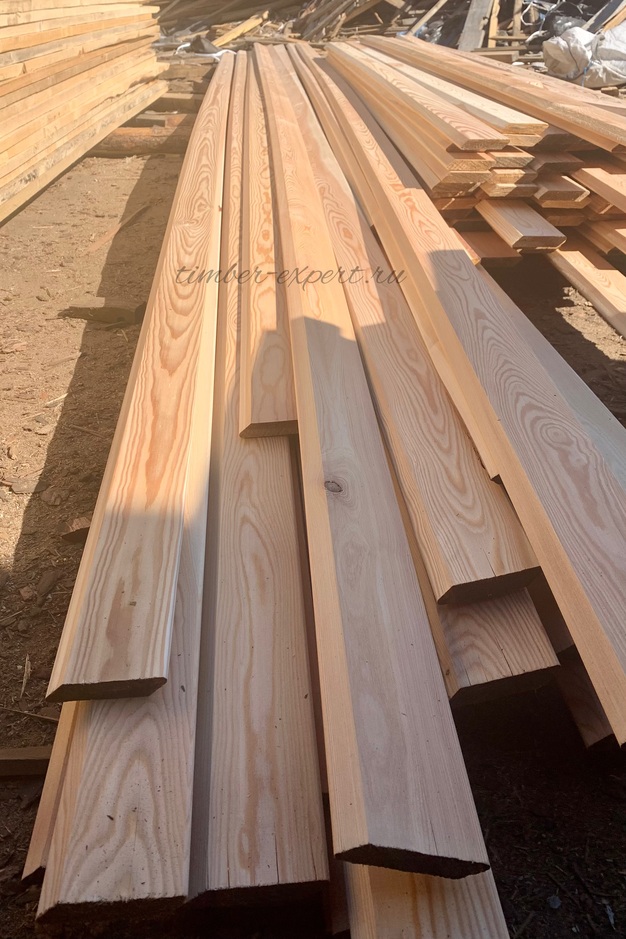
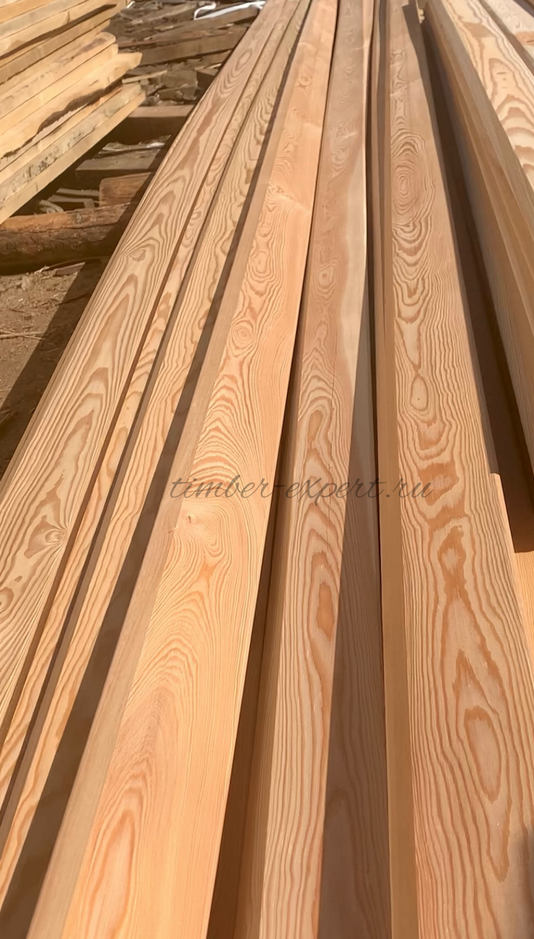
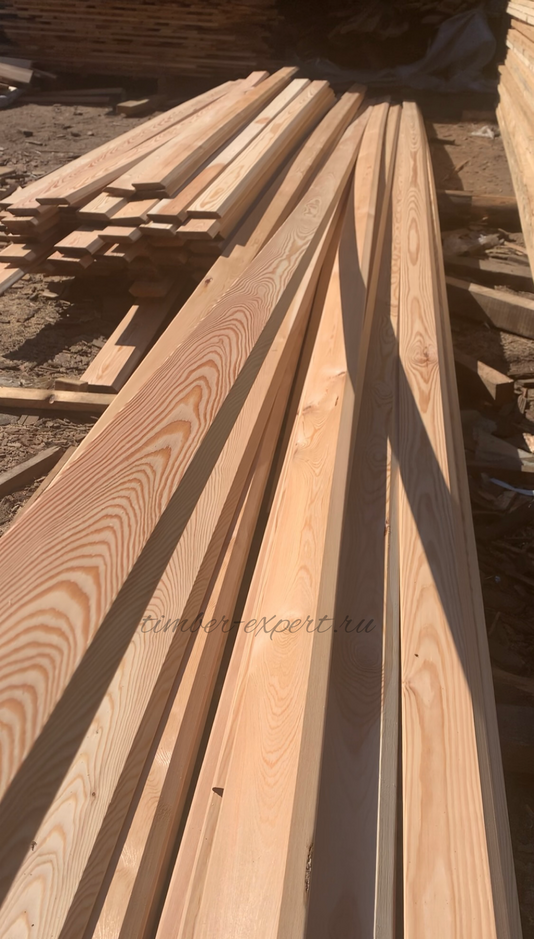
Beside it is an analogous larch cladding, but its span is only 3 metres. To the naked eye, this shorter profile seems impeccably flat. Yet, this isn't to insinuate that its longer counterpart is inferior. Shorter products simply tend to be less prone to organic deformations, imparting them a flatter appearance. Consequently, when opting for Siberian larch cladding rainscreen profile or any other wood product, it's crucial to evaluate not just its grade but its dimensions. Solely relying on visual assessments can be misleading.
Every woodworking aficionado comprehends the dynamic nature of wood. It's a material that "" – reacting to its surroundings, morphing in response to humidity and temperature changes. Contrasting with inanimate substances like steel or plastic, wood evolves organically, possessing its unique set of traits. Recognizing that certain wood attributes aren't flaws, but simply innate features of the material, is paramount.
Understanding standards across borders.
It's pivotal to be aware that while standards such as GOST 8486-86 and GOST 2695-83 are prevalent in certain regions, different countries or jurisdictions might uphold their unique norms and standards concerning allowable deviations in timber products. Regardless of the region, it's a universal truth that these standards exist to ensure quality and consistency in wood production and usage.
Further emphasising the point, while GOST 8486-86 is specific to coniferous species, hardwoods adhere to a separate standard, GOST 2695-83. The examples spotlighted here align with the coniferous standard, mirroring our specialisation in the coniferous varieties of Siberian larch.
When engaging with timber or woodworking projects, it's always recommended to acquaint oneself with both international standards like GOST and local standards prevalent in one's country to ensure the highest quality outcomes.
- Wood Quality: Nature's creation, wood, manifests varied properties depending on species, the age of the tree, and its growing conditions. A tree grown in less-than-optimal conditions might yield boards of diminished stability.
- Wood Moisture: The moisture quotient of wood is a direct influencer of its dimensions. Uneven or rapid drying processes can instigate deformations like warping.
- Machinery Precision: The calibration and periodic maintenance of planing machines are vital. Deviations can emerge from machine inaccuracies or due to their general wear and tear.
- Planing Technique: Aboard's final dimensions can be skewed if the operator neglects the prescribed technique or commits inadvertent errors during its processing.
- Thermal Dynamics: Subjecting boards to uneven or excessive thermal exposure during their processing can trigger dimensional alterations.
- Latent Stresses: Wood might harbor internal stresses which only become evident post its treatment.
- Storage Factors: Improper storage conditions, such as elevated humidity levels or inadequate ventilation, can warp boards.





